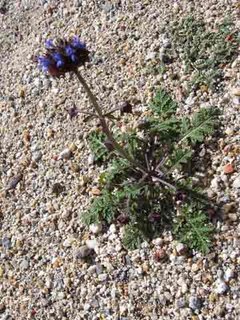
Neil and I got a lot of wild crafting done this trip. It has been exciting to learn so many new plants and their uses for humans. We have also revisited many old friends that we have used for years and found new ways to look at them too. We picked Hyptis, the Desert Lavender, which was exploding with blooms after the snow and melt in Southern California. The bees loved the blossoms as much as we did and found that the flowers and leaves are n excellent tonic for the lungs – and it makes a great tea.
We learned of a new plant call Rattany (Krameria geryii), that is semi-parasitic and looks like a giant bunch of whitish to maroon sticks, but if you look closely, some of the bushes have amazing purple flowers like an orchid and the seeds pods are delightful spiny balls. This plant, among a myriad other uses, makes a great mouth wash to sooth swollen gums and pained teeth. It is great for chronic mouth degeneration, gingivitis, and especially those problems caused by a deficient GI tract; dry mouth, a lack of saliva and dragon breath!
The white sage may be the quintessential plant of the desert west and when we found it all else seemed to fall away. Neil sat by the plant noticing the frantic activity of the bees. Since we have been studying taxonomy, botany and morphology of plants, we have become increasing amazed at the form that each plant takes and just how specialized it is. This flower knew exact ally how to attract it pollinators; look at the way the bees land in search of nectar and meet the pollen. White sage can kill just about any organism that grows on our skin and shouldn’t be there. It’s also what you see in most commercial smudge sticks - -if you’ve smelled it, you’ll never forget it.

Peony Root was a plant I never expected to encounter here or anywhere else in the wild – I have already read about it, but always suspected it was the garden variety of those showy flowers. But, here in the highlands of the desert, where a stream runs down and the soil is sandy and fires are no strangers, we saw the unmistakable foliage of the peony. This flower has fewer petals than its cultivated cousin and stores its nutrients in tubers that are easily gathered without destroying the plant. The tincture of the plant is a truly feminine pink color and sooths the pain of endometriosis.

Oh, and Chia, who knew it was such an important traditional food, a calorie displacer and a great source of fiber? Not just for pets and more. Here it is thriving after a fire. What a beautiful color!

And although we had no idea what Michael was talking about when we gave the lecture we soon came to understand just what rancid coffee could do to your kidneys and urinary tract. This plant, the Buckwheat bush (Erigonym fasiculata) is known as the “trucker plant” because of its ability to sooth irritated kidneys from rancid oils, excessive holding of the urine and too much sugar. After we ran out of good coffee and had to stop in at Fry’s….we were glad we had dried some for tea.




No comments:
Post a Comment